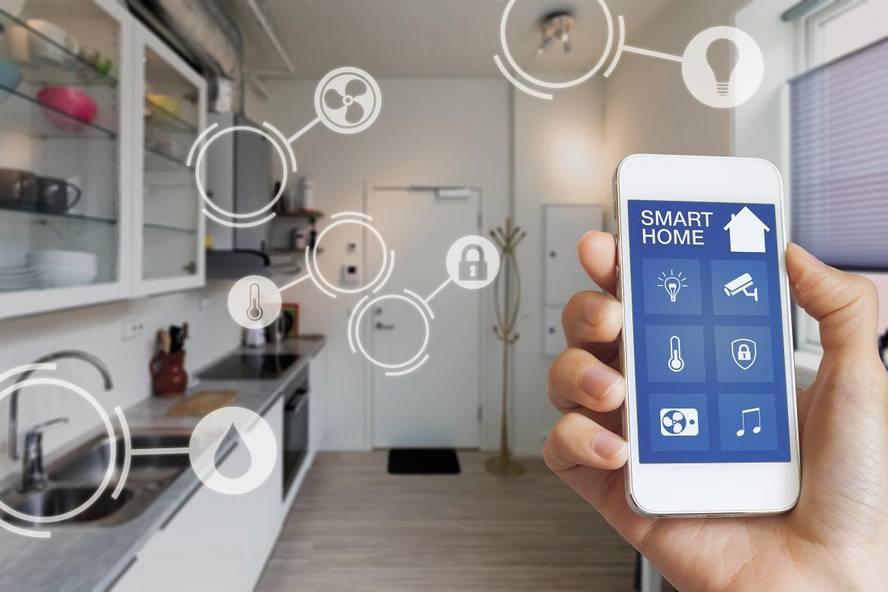Connected Home over IP, communication standard for home automation
Almost six years ago we wrote here about domotics, in the article entitled The houses also smart. There we counted on what a domotic system consists of, and we said that in the coming years they were going to deploy a lot. That's what has happened in part, but we probably didn't think the same thing. Then we said there were many different systems for controllers, communications and interfaces, incompatible with each other, which made it very difficult for both producers and buyers. Consider that a device manufacturer should assume the development and maintenance of all systems and protocols, or “marry” with a system and reduce the potential market. From the buyer's point of view, you had to choose between two things: once you have selected a home automation system, condition the choice of devices that in the future could buy or have many different controllers. Well, this situation remains.
Tech giants are also here...
Things are not exactly the same, since new actors have been put on stage. The well-known technological giants of all life who put the tip of all things are provoking and conditioning the world of domotics: Google, Apple and Amazon.
In addition to controlling our devices with internal switches, thermostats and other controllers, it is very common for home automation systems to remotely control our devices. To do this, it is necessary to use routers or routers that allow us to access devices from outside the home, in addition, in the case of having different home automation systems, several routers are necessary, which increases the risks of security holes. Since the smart speakers of the three companies mentioned were connected to the Internet in many homes, these smart speakers joined the functionality of controlling household appliances. But, of course, each developed their own systems and protocols.
Thus, in the situation prior to the appearance of these gigantic companies, domotics were imposing the Zigbee protocol (more than 500 companies in the Zigbee Alliance association, including Ikea, Philips, Samsung...), and currently there are three other systems in the market: Google nest, HomeKit of Apple and Alex of Amazon. The systems are incompatible with each other and most home devices with domotic capacity work only with one of them. Therefore, betting on a system leaves you more bound for the future than signing a mortgage.
Connected Home over IP, the standard of the future
As Highlanders taught us, this type of incompatible systems tend to play war until one of them stays (remember VHS/2000/Betamax, Blu-Ray/HD DVD...). However, in this case, all agents have agreed to create and implement a single standard protocol and communication system. The four organizations cited (Zigbee Alliance, Apple, Amazon and Google) and ComCast created in December 2019 the IP Connected Home over project, with the aim of achieving compatibility between smart home devices and software and the Internet of Things.
Connected Home over IP (some also called CHIP) will be open standard without royalty whose specifications are being put on GitHub. As its name indicates, it will be built on the IP. The first draft is intended to be published by the end of 2020 and the standard is for the year 2021.
Therefore, everything in good way, will soon become the situation, since the manufacturers of domestic devices will not have to choose and the development will be simplified, thus facilitating the life to the buyers (residential). So yes, it is then when the true expansion of smart homes can come.
New unknown aspects
However, despite the CHIP standard, there are still more deterrent factors for widening and stabilizing domotics. One of them is 5G technology. It is often mentioned that the improvements in the speed and latency of the new generation of communications of mobile phones will also imply their use in other areas beyond telephony, being one of the main uses the Internet of Things and domotics. However, uncertainties about this technology, some for geopolitical and economic reasons, others for the foreseeable damage to health, endanger its extent, both globally and domotically.
We must also take into account the issue of security and privacy. If a cracker realizes our mobile phone or our computer, it can hurt us a lot, but think what can happen if you become aware of our smart home (and its security cameras, locks…).
Finally, there are those who say that putting the qualifying smart home automation that we know today is more than a centralized manual control. They say that the real smart home has not yet arrived; that for that name to be deserved, a home should use many more data from us and outside and artificial intelligence techniques. For example, the house should be able to wake up in the morning to advance the alarm, knowing that there has been a traffic accident and taking into account the time that we usually take from when we wake up until we leave the house and in our agenda we have the first date of the day; or to decide when we turn on the heating so that we are at ease when we get home, taking into account our usual comfort temperature, the hours of arrival at home (with the power)
But what you want to say, I would not want a house that decides everything and makes us even more passive. And that Google or Apple, in addition to knowing our agenda, our searches, all navigation and movements on the Internet, know all our customs within the home. We didn't need more... In addition, we know who has the necessary data, so Google can separate itself from the competition and put the monopoly on home automation. To realize, we will have to enter (well, even more) into the house! And for that we did not need the standard IP Connected Home over...







